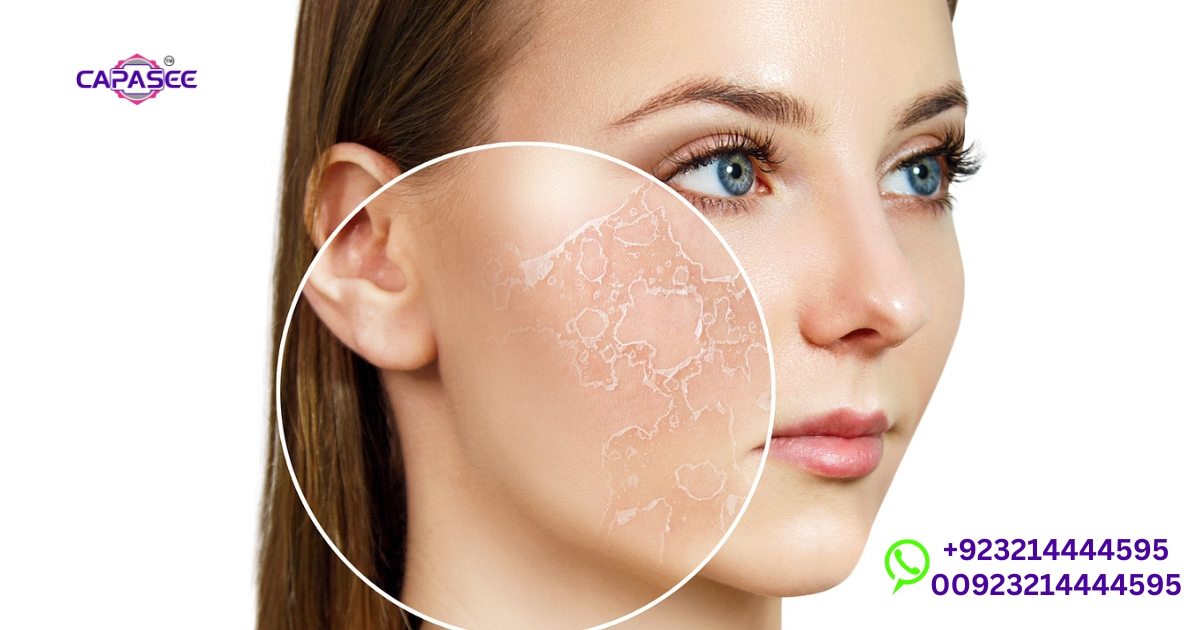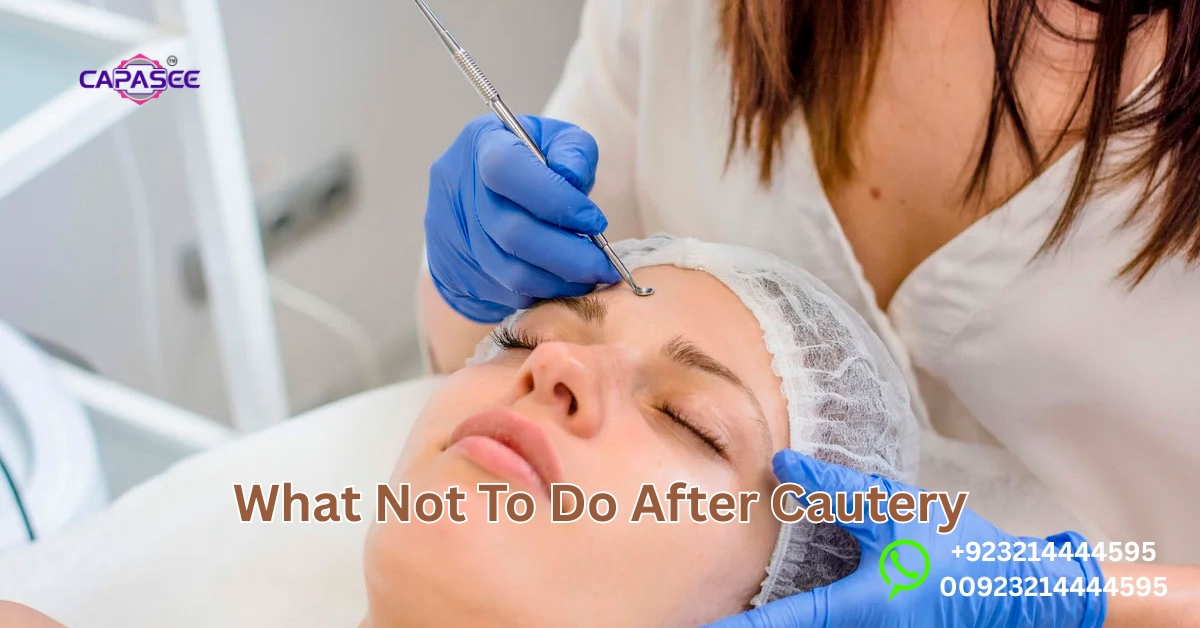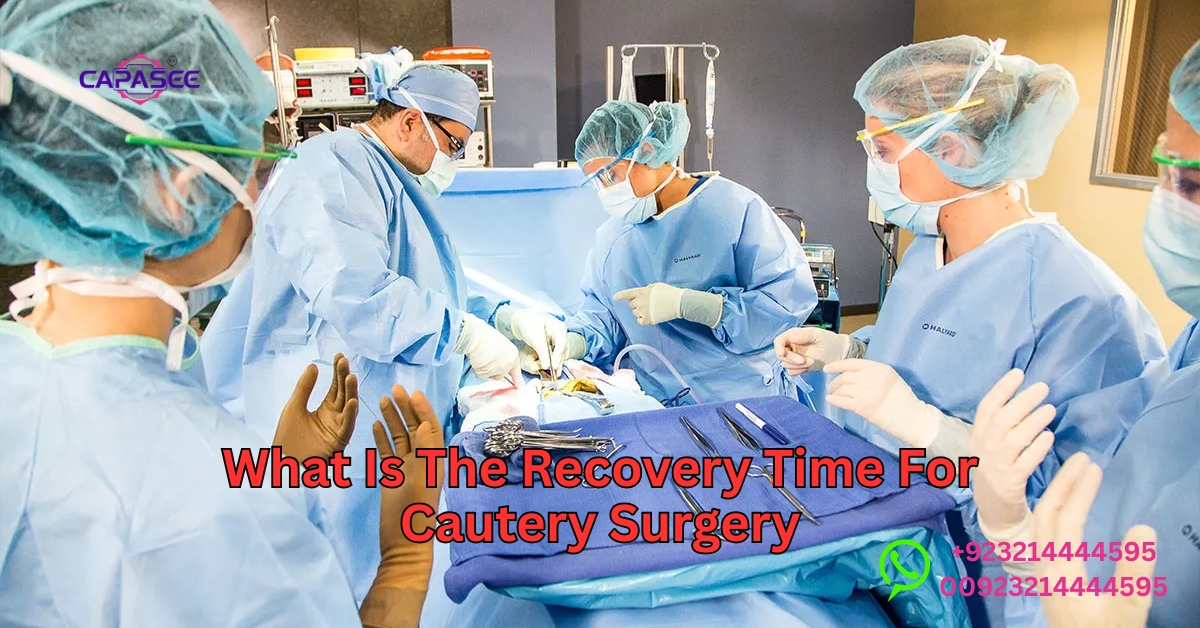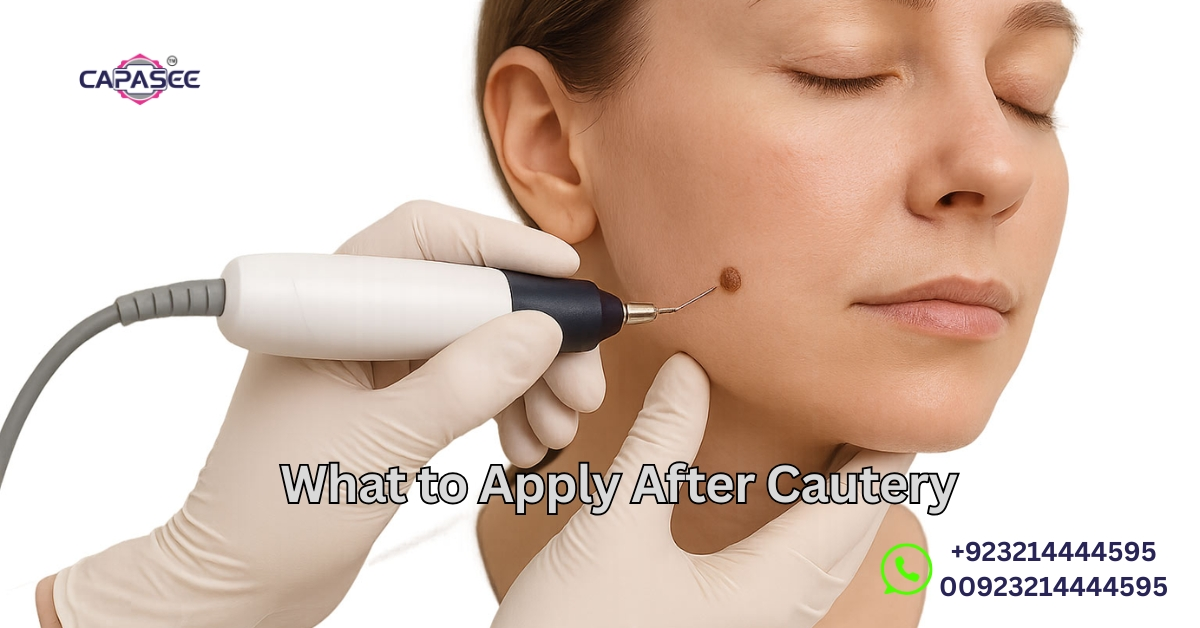Having been cauterized, most people are left asking themselves, What can I do next? Life after the procedure may be difficult, and one may be swept away by all the dos and don’ts. How to avoid some types of activities, how to use the incorrect products, or just not knowing what is safe, there is much to follow up on. The reason why you are reading this is that you are likely to want to make a healthy healing process without any additional complications.
In this blog, we shall take you through the things that should not be done after cautery. You will find out the pitfalls that people make and how they can influence your recovery. At the end, you will also have a clear idea of the correct steps to follow so that your healing process will be as smooth as possible. We are precisely the post you should stick with to get back on track.
Essential After Cautery Care: Capasee Electro Medical Engineering Guide

A healthy recovery must be fast and proper following after cautery. The process of caring about the wound after the cautery has some steps that are to be followed to be sure that the wound will not be complicated in its treatment. Strict adherence to aftercare measures is one of the ways to minimize the possibility of infection and create favorable conditions during the recovery process.
Cautery has a slow healing process. Always take the directions of your physician to the letter. Post cautery wound care is the maintenance of cleanliness and dryness of the affected area, as well as the prevention of contamination and complications of the cautery site by touching and scratching.
Expert Cautery Aftercare Tips for Safe Healing
Cautionary tips such as good hygiene and close wound care are some of the cautions thereafter, after the cautery procedure. Anything that causes disruption to the healing process should be avoided. Recommended ointments should also be exclusively used and no makeup should be applied right after the procedure.
It is important that post cautery care is provided to prevent such common problems as scarring or infection. Take a break and follow the post treatment instructions of your physician. Bear in mind, instructions about post procedure cauteries are to be adhered to to achieve the best results and to avoid all side effects.
What to Avoid After Cauterizing a Wound to Prevent Complications
The side effects of cautery should be avoided by avoiding certain activities. One should not touch the place of the cautery, no makeup must be applied immediately, and no exposure to water on the treated place should take place. Do not swim or bathe the treated part, and do not scratch or pick at any scabs.
It is essential to take care of the treated zone. Also, it should be avoided that robust exercise is done after cautery to prevent the occurrence of infection after cautery and always keep the area clean and dry. All these measures will ensure that the recovery process is accelerated and that the likelihood of complications is minimized.
You May Also Read This Blog: What Is A Cautery Used For
Cautery Wound Healing Process with Capasee Best Practices
The healing of cautery is reliant on compliance with the proper practice of aftercare. Cauterization is done to damage the wound with heat, and it should be closely monitored. The duration of healing is different and is all about the site and extent of treatment.
Some of the warning signs of recovery that Capasee has suggested are to keep hydrated, rest and ensure that you take the advice of the doctor after the treatment. Regularly inspect the area treated to observe the symptoms of infection, e.g. the redness or swelling is growing, and do not delay in case you have observed something strange.
Do’s and Don’ts After Skin Cautery: How to Care for Cauterized Skin

It is essential that proper skin care be practiced after cautery as a treatment recovery measure. The appropriate aftercare contributes to the acceleration of the healing process and avoids such complications as infection. You must not touch the place of the cautery, apply any makeup, or be exposed to water.
In post cautery care, it is required to maintain cleanliness. The post caution wound care consists of not engaging in strenuous physical activity, ensuring the area is kept dry and adhering to the post procedure cautery guidelines. Only in the case of the effective healing and prevention of the side effects of the cautery is it necessary to apply the recommended ointments.
Avoid Picking Scabs After Cautery – Key to Infection Prevention
Scratching or picking scabs is one of the most significant post cautery skin care concerns. The picking of the scabs will interfere with the healing mechanism and put the person at risk of post cautery infection. One has to allow the scab to come off on its own so that the skin can regenerate naturally.
To include in your healing suggestions during cautery, it is advisable to avoid activities that affect the healing of the scab. Cautery complications may come up due to picking scabs or even exposing the treatment area to dirt and this is the reason the area should always be kept clean and dry.
Recommended Ointments After Cautery: What Capasee Recommends
Capasee advises that only prescribed ointments are to be used following cautery. These ointments are used to treat wounds after cautery and prevent infection. Do not forget to take the advice of your doctor on the types of ointments to use on your skin, depending on your type of skin and the healing process.
Do not use products that are not suggested for the skin after cautery. To avoid cautery side effects, it is important to always ensure that the ointment is appropriate in your treatment of cauterization and to adhere to the recommended use.
Cautery Scab Care Instructions for Faster Recovery
To heal faster, it is important to take the right precautionary measures for scab care. Wipe the area treated with clean, dry and no moisture. Direct sunlight on the treated area should be avoided because it will result in irritation and slow healing.
After a cautery procedure, rest and rehabilitation are also vital processes for efficient healing. There should be avoidance of strenuous exercise after the cautery and swimming or soaking of the treated part will help prevent the occurrence of complications and will, therefore, see your skin healed within the shortest possible time.
When to Seek Medical Help: Signs of Infection and Aftercare for Cauterized Lesions

Following the cautery, one should keep a check on the treated area to ascertain whether they are infected. The process of post cautery care was to keep the area clean and dry and also monitor swelling, reddening and abnormal discharge. Early symptoms cannot be disregarded.
These symptoms are detectable at a young age and this will ensure that you do not experience complications when recovering from the cautery treatment. In case of pain, swelling and pus escalation, it is essential to see a doctor. The cautionary measures of the right post procedure will guarantee that the process of after cautery healing proceeds as well as it could.
Recognizing Signs of Infection After Cautery
Infection symptoms following cautery are redness, swelling, and warmth of the area where the cauterisation is performed. Cautery wound care requires frequent examination of the site by looking at it and checking whether there is pus or an unpleasant smell. In case of any such signs, emergency treatment can be required.
In order to avoid infection following cautery, adhere to the instructions of your doctor. The infection will be avoided by keeping the treated area clean and dry, and poor care practice or contact with harmful substances can not cause side effects of cauterization.
When to Call a Doctor After Cautery – Capasee Electro Medical Engineering Advice
When your pain is so severe, or you find that the wound is not healing as it should, then you need to see a doctor. Post caution care is very patient, although sometimes professional assistance is necessary. Post cautery healing tips can be different depending on the skin and healing rate.
Capasee advises contact in case of any abnormal symptoms like fever or pain aggravation. The rules of post procedure cauteries are to be observed, yet in case your condition is not getting better, professional assistance cannot be ignored to prevent the occurrence of more issues.
Read More: Our Products
Post Cautery Wound Care: Ensuring Optimal Healing and Safety
Optimal healing of skin requires proper skin care after cautery. One should not touch the area of cautery or apply makeup immediately after the procedure. It is important to keep the area dry and clean, as well as apply only recommended ointments, to recover quickly.
The complications that can be prevented after the cauterization are rest and observing the cauterization do’s and don’ts. Exercise and sunlight should be avoided as this may slow down the healing process. You should always take the advice of your doctor after the treatment to guarantee that the wound is healing safely and effectively.
FAQ’s
What are the do’s and don’ts after cautery?
Cautery, each part of the body should be clean and dry after cautery; they should never touch or scratch the part done. Heal yourself by taking the advice of your doctor.
What should you not do after electrocautery?
It is necessary to avoid touching the cauterized region, exposing it to water, and using makeup until it is completely healed to avoid complications.
How long does it take to heal after cauterization?
The process of healing after cauterization is a normal process that should take 1 to 2 weeks, depending on the nature of the procedure and of course, proper aftercare.
What should you avoid after cauterization?
Do not engage in vigorous physical activity, expose the scab to direct sunlight, or scratch the scab. Keep the site dry and sanitary to heal faster.
Can I shower after cauterization?
Direct contact with water on the treated area should be avoided within the first few days of treatment in order to allow proper healing. Take a quick, less vigorous shower.
Conclusion
Understanding how not to act after cautery is key to painless recovery. One should avoid interacting with the treated area, being in contact with water, and putting on makeup until it is completely healed. Complications will be reduced by following the post cautery care directions, such as applying recommended ointments and avoiding direct sunlight. Do not rush the healing of your body, but ensure that it rests well. It is through such precautions that you will recover faster and safer and avoid needless setbacks. You should always consult your doctor in case of any infection indications.



